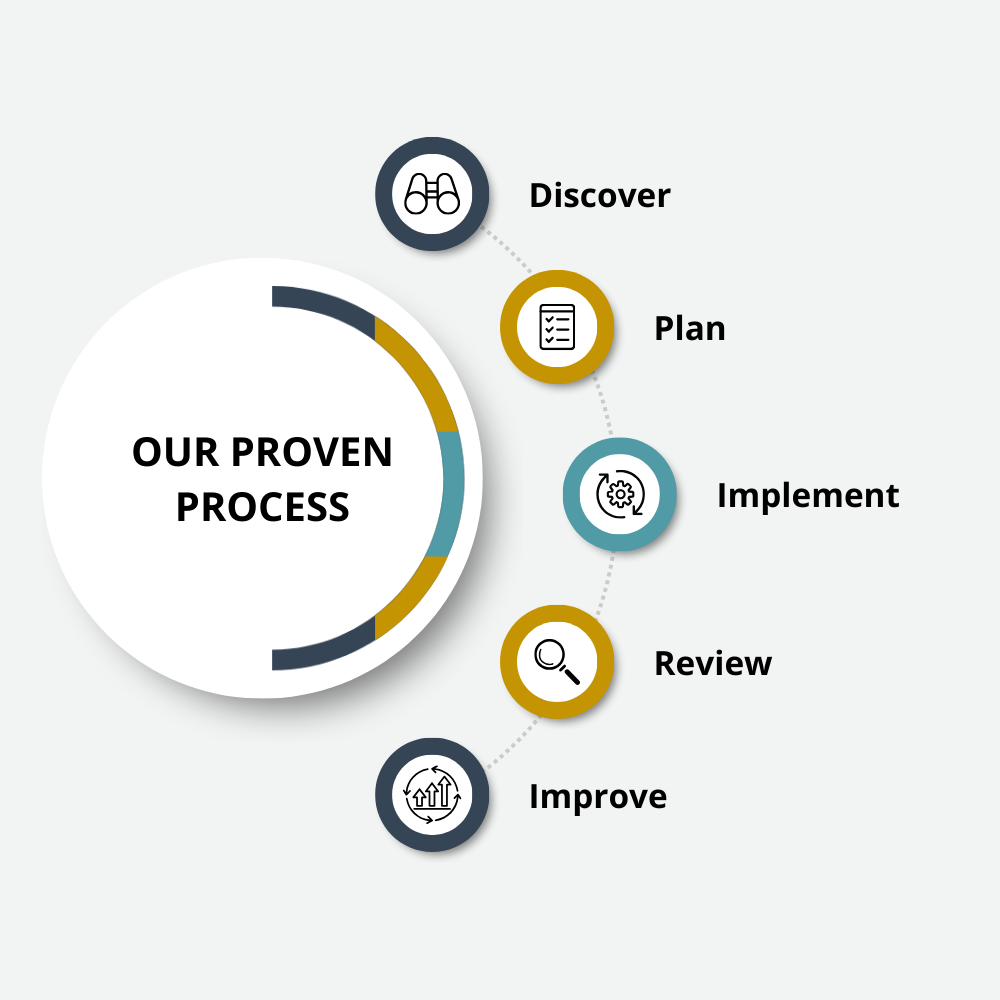The second half of the year has officially kicked off, and there’s no better time to get a handle on your taxes. Effective mid-year tax planning can not only help you save income taxes but can also increase your retirement fund, reduce your ensuing estate taxes, and help you effectively manage cash flows. Here are some strategies to consider now.
Revisit Your Retirement Contributions
Employer-Sponsored Plans – Are you maximizing your contributions to your employer’s sponsored plan? If not, are you at least contributing enough to get the full employer match? Now is a good time to review and make changes to your contributions. If you’re not contributing enough to get the full employer match, increase your contribution amount. If you’re planning to maximize your contribution, check to make sure you’re on target to contribute $19,500 (for under 50) and $26,000 (for 50 and over) by taking advantage of the catch-up contribution of an additional $6,500.
Self-employed – If you are self-employed, now may be a good time to consider putting a retirement plan in place. Not only would this allow you to save for retirement, but it would also save tax dollars, as the contributions are deductible. There are several options available that are relatively easy to set up and administer. Your financial or tax advisor can help you determine the plan that is right for you. The plan type will depend on the number of employees, cash flows, and overall goals.
Traditional and Roth IRAs – In addition to contributions to your employer’s plan, or if your employer does not have a plan, you can contribute up to $6,000 ($7,000 for 50 and over) for 2021 to a traditional or Roth IRA. Contributions to a traditional IRA may be tax-deductible for the tax year made, but keep in mind that distributions are taxable in the year received. Roth contributions, on the other hand, are not deductible for the year made but distributions are not taxable provided certain requirements are met.
There are income limits in determining the deductibility of contributions to a traditional IRA and in determining if you can contribute directly to a Roth IRA. Exceeding the income limits does not necessarily preclude you from contributing but it may require some additional tax planning. So, if you are planning to contribute to a traditional or Roth IRA, be sure to discuss it with your financial or tax advisor to ensure that you’re receiving the best benefit.
While most planning strategies must be implemented by year-end, contributions to traditional and Roth IRA accounts can be made all the way up to the original due date of the return (April 15 in a normal tax year). This gives you some flexibility in optimizing your tax planning strategy.
Adjust Withholding if Needed
Check federal and state withholding to make sure you’re on track. If you had a big tax bill for 2020 and you expect 2021 to be similar, increase your withholding now to reduce the amount you will owe when you file your returns in 2022. If you received a significant refund for 2020 and you expect 2021 to be similar, decrease your withholding now and get more in each paycheck rather than getting a big refund when you file your return.
If you have significant changes to your income for 2021, talk to your tax advisor about running tax projections to ensure that you’re on track. If you have children, be sure to factor in tax law changes to the child tax credit and child care credits (see below for a summary of changes).
Any adjustments to withholding can be accommodated by submitting a new W-4 form to your employer.
Itemize Your Deductions to Maximize Them
One of the significant aspects of mid-year tax planning is deciding whether to take the standard deduction or to itemize your deductions. While taking the standard deduction may be easier, itemizing may ultimately save you tax dollars. This is especially true if you live in a high tax area, are self-employed, or own a home. If your itemized deductions exceed the standard deduction of $25,100 for joint filers and $12,550 for single filers for 2021, you should itemize.
Since the election is made on a yearly basis, you can alternate between taking the standard deduction in one year and itemizing the next. If you’re using this method, it may make sense to bunch your expenses for charitable contributions and medical expenses into one year rather than spreading them over multiple years.
For 2021, there is an above-the-line deduction for those taking the standard deduction. The deduction is limited to $300 for single filers and $600 for married filing joint provided the contributions are made by cash or check to qualified organizations.
Child Tax Credit and Child and Dependent Care Credit
Legislation from the American Rescue Plan Act made significant enhancements to the Child and Dependent Care Credit, the Child Tax Credit, and the Lifetime Learning Credit. It’s important to note that tax credits and tax deductions are different. Deductions decrease your taxable income, while credits reduce your tax bill. Be sure to factor these changes into mid-year planning or projections.
Child and Dependent Care Credit – There were a few significant changes made to the Child and Dependent Care Credit. First, the credit is now refundable for people who live in the United States for more than half the year. In prior years, if your tax liability was less than the credit, the excess credit was lost. Second, the amount of eligible expenses increased from $3,000 for one child and $6,000 for two or more to $8,000 for one child and $16,000 for two or more children. Third, the maximum percentage increased from 35% to 50%. This means that more families will receive an increased credit for 2021.
Child Tax Credit – There were also significant changes to the Child Tax Credit. You can receive up to $3,000 per qualifying child between the ages of 6 and 17 and up to $3,600 per child under age 6. This is an increase from the current credit, which provides up to $2,000 for each child under the age of 17. The credit also includes children who turn age 17 in 2021.
To help get the money into the hands of families, there will be advanced payments of up to 50% of the credit to be paid each month from July to December of 2021. The enhanced portion of the credit is available for single parents with Adjusted Gross Incomes (AGI) up to $75,000 and married filers with AGI up to $150,000 annually. To be eligible, taxpayers must have a primary residence in the United States for more than half the year.
Lifetime Learning Credit
The Lifetime Learning Credit is a tax break that applies to tuition-related expenses for education programs that help you acquire new skills or enhance your expertise. This includes undergraduate, graduate, and other professional courses for you, your dependents, and your partner.
In 2020, income level phase-out began at $59,000 for those who file individually and $118,000 for spouses who file jointly. This year, the phase-out will start at $80,000 for individual filers and $160,000 for joint filers.
Start Identifying Opportunities to Reduce Your Tax Obligations
It’s important that you consult your financial advisor or tax professional before implementing any tax strategy. They’ll use your individual financial position to create a personalized plan for you, helping you to reduce your liabilities.
If you have questions about your individual tax planning needs, don’t hesitate to contact us for a one-on-one consultation.




















